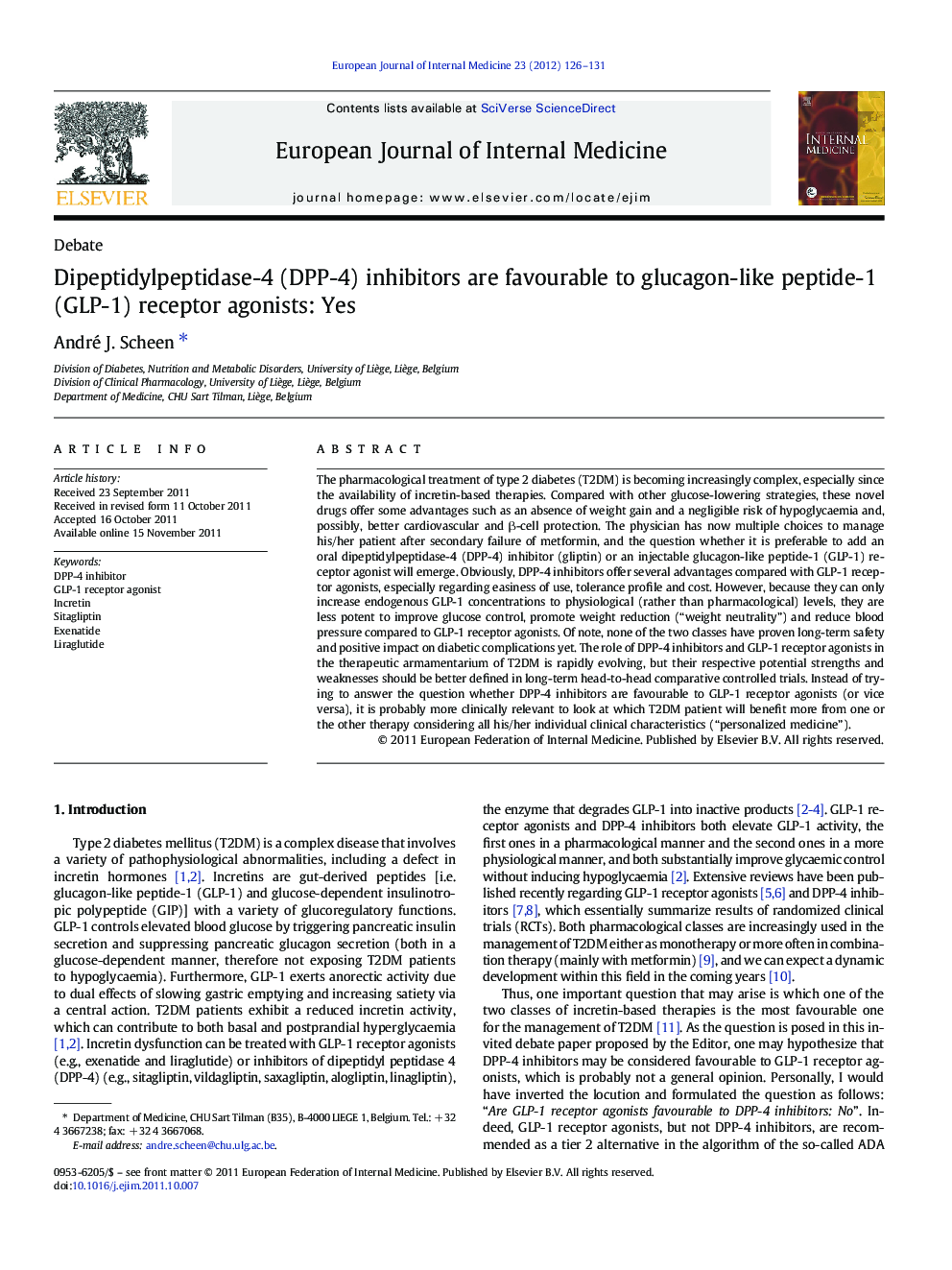| کد مقاله | کد نشریه | سال انتشار | مقاله انگلیسی | نسخه تمام متن |
|---|---|---|---|---|
| 3467318 | 1596575 | 2012 | 6 صفحه PDF | دانلود رایگان |

The pharmacological treatment of type 2 diabetes (T2DM) is becoming increasingly complex, especially since the availability of incretin-based therapies. Compared with other glucose-lowering strategies, these novel drugs offer some advantages such as an absence of weight gain and a negligible risk of hypoglycaemia and, possibly, better cardiovascular and β-cell protection. The physician has now multiple choices to manage his/her patient after secondary failure of metformin, and the question whether it is preferable to add an oral dipeptidylpeptidase-4 (DPP-4) inhibitor (gliptin) or an injectable glucagon-like peptide-1 (GLP-1) receptor agonist will emerge. Obviously, DPP-4 inhibitors offer several advantages compared with GLP-1 receptor agonists, especially regarding easiness of use, tolerance profile and cost. However, because they can only increase endogenous GLP-1 concentrations to physiological (rather than pharmacological) levels, they are less potent to improve glucose control, promote weight reduction (“weight neutrality”) and reduce blood pressure compared to GLP-1 receptor agonists. Of note, none of the two classes have proven long-term safety and positive impact on diabetic complications yet. The role of DPP-4 inhibitors and GLP-1 receptor agonists in the therapeutic armamentarium of T2DM is rapidly evolving, but their respective potential strengths and weaknesses should be better defined in long-term head-to-head comparative controlled trials. Instead of trying to answer the question whether DPP-4 inhibitors are favourable to GLP-1 receptor agonists (or vice versa), it is probably more clinically relevant to look at which T2DM patient will benefit more from one or the other therapy considering all his/her individual clinical characteristics (“personalized medicine”).
Journal: European Journal of Internal Medicine - Volume 23, Issue 2, March 2012, Pages 126–131